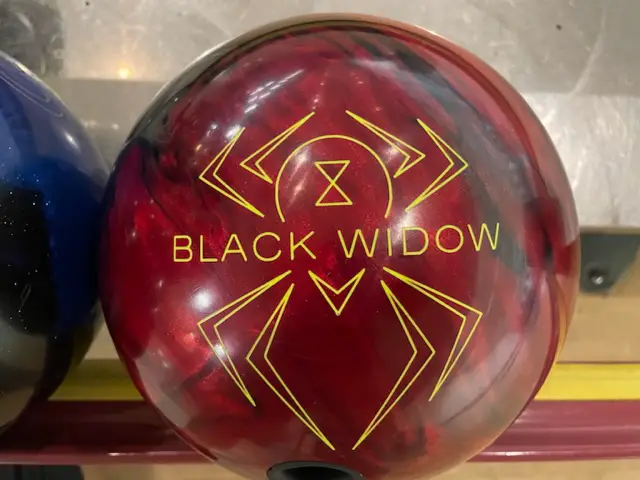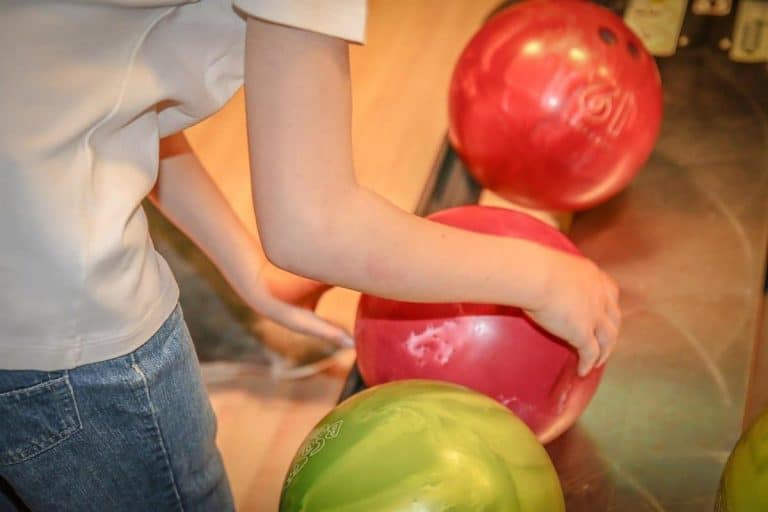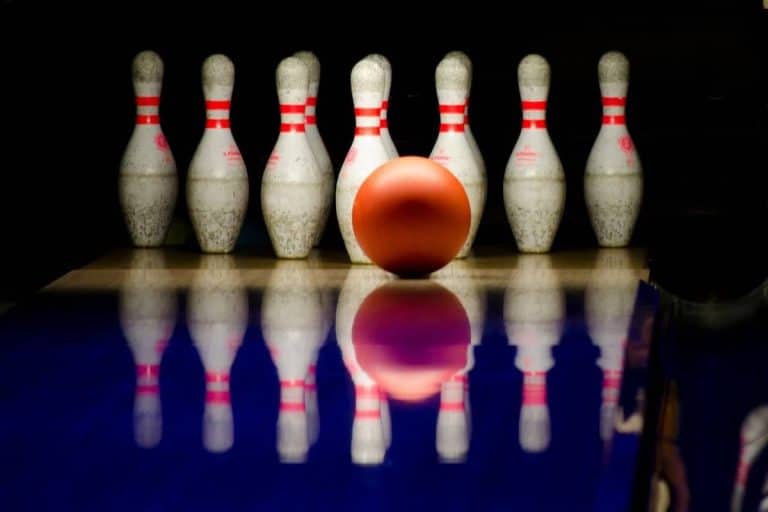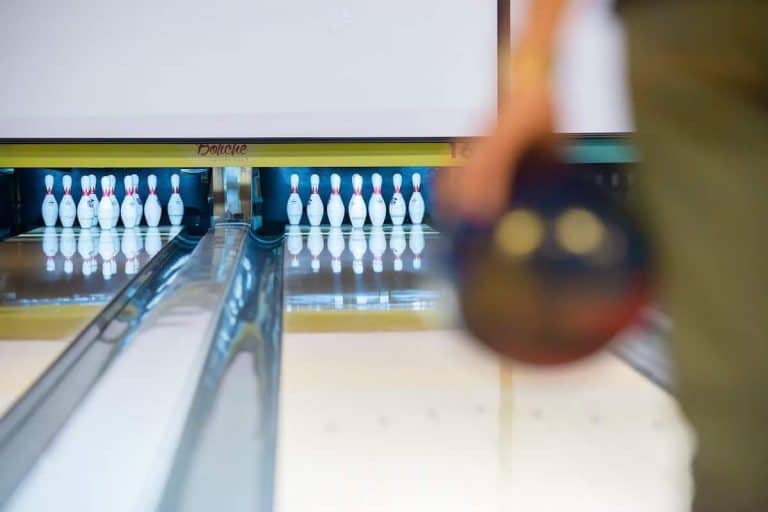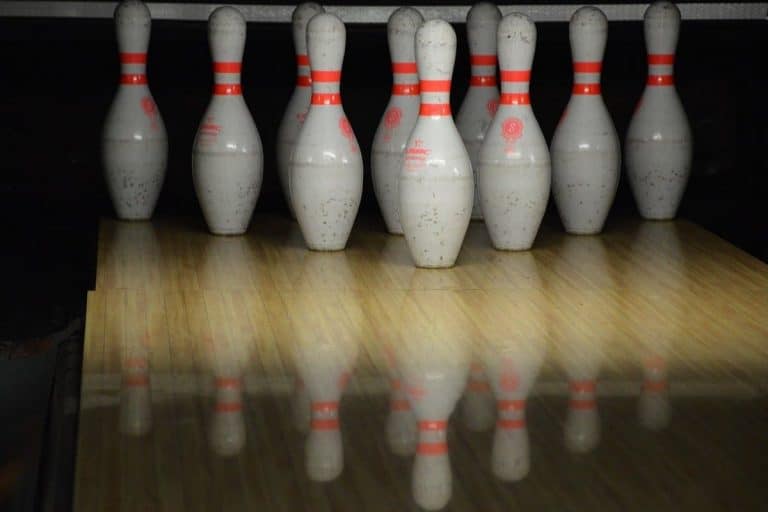Are Bowling Balls Hollow or Solid? (Videos Included)
There are a lot of sports that require balls. Inflated, solid, hollow, big, small…I could go on. But what about bowling balls? Are they hollow, solid, or maybe even some weird combination?
Bowling balls are made entirely of solid material and are not hollow. Bowling balls have a shell (called a cover stock) typically made of reactive resin or urethane, filler material, and a weight block. Both are important to how the ball behaves after the roll.
Read on about how balls are made and how the processes came to be.
Bowling Balls Evolved Over Time
The ancient Egyptians invented the bowling ball after they carved stone into it. In the 1900s, the balls were first made from rubber and wood. In 1960, polyester resin was used for the first time to make bowling balls with swirling colors.
Because of the rise of polymers, many more scientists are now working on the chemistry of bowling balls. Once more and more researchers entered the field, the US Bowling Congress began to regulate how balls are made.
Paul Ridenour, a research engineer for the USBC’s specifications and certification division, said that the organization is constantly looking for new ways to improve the quality of bowling balls.
Most Recent Bowling Ball Designs
In the past, some companies also started producing balls with coverstocks made of tiny particles. These balls, which were in the 1990s, have a jagged urethane foundation and are hollow. According to Ridenour, these shells are made with particulates that can come from ceramics, carbonate, or even glass.
Also, according to Ridenour, the balls used today are made using a combination of solid rubber and plastic. The three-piece design helps create the perfect game ball because each part works with the others to make a perfect strike. The center core, the outer shell, and the filler core are all designed to provide the best possible performance
The USBC has updated the standard for the surface roughness of bowling balls, which will take effect in 2019. Ridenour says that the new maximum surface area the measure will allow is 50 microinches. It is equivalent to dragging a needle across the entire surface of the ball.
The USBC is looking into how the performance of the bowling ball’s parts is affected by the temperatures at which the bowling ball turns into glass.
How Manufacturers Change The Inner Coverstock
Victor Marion, a technical service specialist at Storm Products, said you could customize the density of a bowling ball’s inner coverstock to make the different weights used in bowling. Makers want to keep the exact formula for their reactive plasticizers under wraps as proprietary.
Other bowling balls, made of particles and reactive resin, have various scents ideal for people who enjoy relaxing and experiencing some aromatherapy. Marion of Storm says that the coverstocks of the products are infused with different essential oils that will last for about ten years.
Bowling Balls Are Not Hollow
A bowling ball’s shell is made of different materials with different densities.
Its weight and center of gravity are established by the components that make up its body. Even small and large bowling balls can fit this description. Thus, bowling balls are not hollow.
There are also large finger holes in bowling balls that make it look like the entire object is hollow. However, this is not the case.
Bowling Balls Vary In Design
The bowling ball manufacturers create various types of balls. Some are designed to roll straight, while others are meant to be slower or faster. The production process for these balls is very scientific.
The variables are the filler material density and the weight block’s form and size. A lot of planning goes into making a bowling ball. The ball’s weight is set by the thickness of the filler material, while the weight block is about striking a balance for more forceful or nuanced hooks.
Bowling Balls Are Well-Engineered
Even though some bowling balls are pretty heavy, this is just an example of how density engineering can make a ball lighter for people who like that. It’s surprising how much science goes into making things, but it all makes sense once you factor in things like gravity, motion, energy, and direction.
Or, as I like to say about all sports, it’s about geometry and physics.
Let’s take a look at how bowling balls are manufactured:
Core Formation
The center of a bowling ball has to be created first. Its core comprises resin, ceramic, glass microbubbles, and dense filler. These contribute to its overall density.
After a weight block has been placed in the mold’s center, the filler material is poured into it. The mold can then be put aside once the core has been filled. The weight block might be made of wood, ceramic, or steel, depending on the material used.
Depending on the type of ball, the mold may be allowed to cure, enabling it to create a core that can help dove with various substances, such as reactive resin, urethane, or plastic. A weight block was put inside the mold to maintain equilibrium.
Coverstock Molding
There is a need to cover the bowling ball after the core formation. This process needs the cover to be mounted on the pin and placed inside the mold for it to work.
The materials used to mold a bowling ball are usually plastic, urethane, polyester, and reactive resin. The mixture is then poured over the core and left to solidify. After the cover material has been thoroughly molded, it’s time to bowl the ball. However, there’s a small hole in the center of the ball.
The following step involves making a plastic pinhead out of a plastic strip. It is the first step in making bowling balls. However, there is more to the process.
Finishing
The last step involves moving the bowling ball to its finishing area. The first step requires sanding, polishing, and resurfacing it so it’s the right size and shape.
This process involves making finger holes for the bowling ball. For instance, some manufacturers are making personalized balls with the desired diameter. On the other hand, for standard balls, some are using standard finger hole sizes.
Branding comes next, either by machine or by hand. Also, there’s polishing to come up with an appealing ball appearance. From raw material to finished product to retail sale and finally professional use: that’s the life of a bowling ball.
Parts Of Bowling Balls
- Inner core
- Outer core
- Coverstock
The outer core, the coverstock, and the core are the three main components of a bowling ball. When sliced in half, these components can be seen. However, there are only two components to the other balls. These are the core and the coverstock.
Inner Core
The inner core of a ball is the heaviest section and is made of dense materials. Contemporary balls feature a weight block at the center.
Outer Core
The outer core is the outermost part of the ball. It contributes to its maneuverability by absorbing the ball’s forward momentum.
A bowling ball can have an asymmetrical, symmetrical, or pancake-shaped outer core. No solid body can be found in a pancake. They’re perfect for novices and people who typically bowl in a straight line.
The pancake bowling ball core is the standard for lanes. You may pick up spares with ease from the pancake center as well. Unlike a pancake core, a symmetrical core can hook more effectively because of its even weight distribution.
Cores with an uneven weight distribution are the most complicated. It makes the ball more likely to hook. Bowling balls with asymmetrical cores are more popular among professional bowlers.
Coverstock
The parts that give bowling balls their balance and make them lighter are in the coverstock, which is the inside shell. The coverstock, the upper layer, is usually made from either urethane or polyester. It determines the appearance and performance of the ball. In addition to its speed, the coverstock affects the ball’s ability to hook and react to the lane.
Today, various types of coverstock materials are used for bowling balls. They are the following:
- Polyester Or Plastic
- Urethane
- Reactive Resin
Polyester Or Plastic
One of the most common synthetic materials used for bowling balls is polyester. This material is very long-lasting and reliable. Plastic bowling balls have less friction and slide more than other materials, allowing them to move on a direct path. These are ideal for people who are new to the sport.
Urethane
Urethane is often used as a coverstock material because it is soft ale. Polyester, on the other hand, has a higher friction coefficient. For people interested in improving their skills at bowling, urethane balls are usually the best choice. They may prefer to use reactive resin coverstock as their skills improve.
Reactive Resin
A new type of bowling ball made from reactive resin combines the advantages of polyurethane and urethane. It can be hooked and has the strength of polyester. Reactive resin is the best choice for bowling balls because of how it works. It can handle both fast and straight shots.
If you want to play the game well, a ball with a reactive resin cover is required. It will need a lot of skill and power to get the most out of it.
How To Choose Bowling Balls
Consider The Weight Of The Coverstock Material
Make sure that the holes for your fingers are in the right place, regardless of the type of ball you’re using. You can always ask a pro at a nearby bowling alley or ball shop if you need clarification on the holes.
The weight and size of the ball are also essential when it comes to playing the game. A heavier ball will make it harder to throw but also gain greater momentum.
Before you start playing, make sure that all of your equipment is in order. If you’re new to the game, it’s best to start with lighter balls. Try playing with a heavier one when you’re ready to improve.
Professional bowlers prefer to use the center of the ball as their main concern. Try testing different types of balls to see which one you like. The base structure you’re using may not be best for you.
Do Bowling Balls Need Holes?
A bowling ball does not need holes. You can throw or roll the balls down the lane using both hands. If a bowler has no fingers or has hand issues, they can still bowl. Read more in my post on Can You Bowl Without Using the Holes.
Due to the presence of finger holes, bowling balls with these allow the bowler to lift and rotate the ball, which can cause it to curve or hook down the lane. In ten-pin and American nine-pin bowling, the balls have typically have three holes for your fingers and thumb. But you can use anywhere from zero to 5 holes.
What Kind Of Bowling Ball Has No Holes?
Bowling balls used in games like five-pin, candlepin, duckpin, and European nine-pin bowling are small enough to fit in the palm of your hand and are solid, not hollow.
Unlike other forms of bowling, candlepin doesn’t have holes.
Duckpin balls are slightly larger than candlepin balls, which are about the same diameter. They are often used in miniature ten-pin bowling alleys, which you can find in arcades and amusement parks.
How To Drill A Hole In A Bowling Ball
New bowling balls don’t usually have holes. Serious players will want to pay close attention to the design of the holes on their balls to ensure that they allow a secure grip and good control. The ball’s behavior could change depending on the depth and shape of the hole.
Let a pro take care of the holes in the ball to achieve the best results. Here’s how you can do it:
- Choose a ball
- Select a hole configuration
- Drill the ball
Choose A Ball
When choosing a bowling ball, it’s imperative to consider its construction, size, and weight. You can find balls made from various materials, such as urethane, plastic, and particle, at a low price. These have varying characteristics, such as strength, friction, and durability.
Select A Hole Configuration
The configuration of the holes can affect their power and control. Your limitations and abilities will also determine the arrangement. The holes in the bowling alley ball arrangement allow your thumb and fingers to go up to the second joint of the ball. It is a good technique for intermediate and beginner players.
To make a semi-fingertip grip, drill a couple of holes between the first and second joints of the ball. This grip is stronger than the standard one, though it’s easier. Another variation is the “Sarge Easter” grip, which is more frequently used.
Then measure the span. Your span is measured from the base of your thumb to the tip of your index finger, which will be the points where you will hold the ball. Some people prefer the middle and ring fingers, while others prefer the tip of the index and middle fingers.
Make a record of your measurements, such as the depth of your fingers and the distance between the holes. Having an angle right for your hand is very important to ensure that it performs well and is comfortable. For instance, if the holes are set forward, the ball will lift more when released.
Drill The Ball
To prevent the ball from moving while drilling, mark your spots carefully. With an erasable marker, mark the hole configuration. Put a dot in the middle of where you want the holes to go to ensure they are in the right place. Use your span measurement to confirm that the holes will be in place.
Choose the right size drill bit to make holes comfortable for your fingers and thumb. Place the first bit into the hole. Prepare the bowling ball drill with the appropriate size for your thumb’s width.
To avoid drilling too deep, carefully drill the hole at your desired angle. Once you’re certain of the pattern and depth, continue to the next hole, usually a pair of finger holes. After removing the drill bit, you can sand the holes until they are smooth.
Conclusion
Whether you are a professional or a beginner, having a good knowledge of the game is necessary for anyone interested in learning more about it. Just as bowling would not be possible without balls,
Simply put, bowling balls aren’t hollow but formed of solid material. Cover stocks, the outermost layer of a bowling ball, are commonly constructed from reactive resin or urethane, filler material, and a weight block.

